ESNAF TOYS® are handmade wooden magnetic toys for kids and design lovers inspired by BAUHAUS. They are ethically produced using local suppliers and natural materials, challenge children and parents in puzzle solving, teach them about animals, nature and combinatorics, and instil good taste. We strive to create practical objects as design art pieces and solve the problem of bad aesthetics in the world of toys. ESNAF TOYS allow for endless combinations with a minimum of magnetic tiles.
ESNAF TOYS® are handmade wooden magnetic toys for kids and design lovers. By matching the colors you create a specific animal. By mismatching the colors you can assemble your own creatures and you have countless combinations.
ESNAF TOYS® are more than just toys:
- They implement beautiful minimalistic design into the everyday lives of children and parents. This is how they contribute to cultivating good taste in design and quality materials.
- The toys are the result of an entirely local sustainable production cycle. They are made from natural materials, using local suppliers and additional recycled products.
- They create playful moments for parents and children together by solving puzzles, learning about animals, evolution, geography and combinatorics in a natural way, while playing.
ESNAF TOYS® is a brand strongly inspired by the BAUHAUS movement. As admirers of this movement and architects we want to contribute to the New BAUHAUS movement by finding functional and beautiful solutions to:
- fine art and functional everyday design - BAUHAUS aimed to reunite fine art and functional design. As architects and engineers we strive to create practical objects with the soul of artwork. We want to solve the problem of bad aesthetics in the world of toys and teach children good taste, by giving them the opportunity to play with toys as art pieces.
- mass production - Bauhaus introduced mass-production design patterns that were simple, rational and accessible to all people which is the main vision of the ESNAF TOYS brand as well. We design our toys as minimalist design objects, but we produce them by hand and with machines in ever larger quantities, because ultimately, we want every child around the world to have at least one ESNAF TOY collection at home. We want to prove that this attitude to design can be applied to every product that we use in our daily life.
- less is more - ESNAF TOYS allow for endless combinations with a minimum number of magnetic tiles.
Please highlight how the project can be exemplary in this context
There is a massive problem worldwide with the huge production of “fast food” toys. Homes are cluttered with useless toys. Children get bored with them quickly. These are the phenomena which we fight with and we built our company values upon finding solutions to them:
-
Sustainability philosophy - Sustainability is expressed not just with the materials but primarily with the concept itself. Children from any generation love and play with animals. That's why we chose to design these characters that never go out of style. Playing with such toys will reconnect urban kids with wild nature, even in far-away places on our diverse Planet Earth.
-
Long-lasting design - ESNAF TOYS age beautifully like only wood can. They are produced with the quality allowing to keep them long after the children stop playing with them. They can be used as decoration. We wanted to create toys that your grandma would take out of her chest when you visit. Toys that last through generations. Toys for life!
-
Sustainable materials - ESNAF toys are made of wood, such as beech and oak. They are not varnished or lacquered. The paints are eco-friendly, certified for children’s toys, made of natural ingredients. The packaging is made of recycled paper.
-
Sustainable Distribution - In the early days of ESNAF TOYS we made a promise to ourselves to create designs that only use materials and services we have easy access to. We’ve stuck to this principle so far. All materials and services we use are sourced locally, in our neighborhood, within 10 minutes’ walking distance of our workshop.
-
Recycling - Even if the whole production process is sustainable, we want to push more for the Planet. We find ways to use the leftover materials as well - balance games, more animals, wooden jewelry.
-
Combinatorics - We want to show children that in order to have new toys you don’t need to buy them from the shop, but you can often combine toy parts you already have and just unleash your imagination.
Please highlight how the project can be exemplary in this context
Poor aesthetics and standard primary colors of mass produced toys are problems we recognize. We cannot accept that harmonious pastel colors and calm simple forms should be only part of expensive exclusive design.
As architects by profession, we cannot remain indifferent to aesthetics. We wanted to solve this problem. One of the reasons why Bauhaus is our favorite movement is that it aims to integrate fine design in the space we inhabit every day. We believe that its mission is to create aesthetically pleasing spaces, where people will feel inspired for their own jobs and activities. With ESNAF TOYS® we want to bring this aesthetic into the world of children's toys, so children learn to recognize which materials and designs are beautiful in a natural and seamless way through play. The beauty of wood and the way it ages, the pastel colors used in moderation, the simple geometric shapes - they all follow the “less is more” concept. In addition to this, we noticed that grown ups have their favourite toys as well. That is why we boosted some of the designs in XL size. We started seeing our toys on display in people’s homes, that is why we refer to them as “toys for kids and design lovers”.
Please highlight how the project can be exemplary in this context
The motto and long-term vision of our company is to place an ESNAF TOYS toy or collection of toys in the hands of every child or design lover around the world, so they can play with them, learn about nature and animals, make new creatures and have fun!
To reach this goal we work tirelessly to increase the accessibility and affordability of our toys, without sacrificing their design, quality and the sustainable materials they are made of. In the last year, we redesigned some toy parts to be manufactured by CNCs and specialized woodcutting machines and are researching if we can have them made by robots too in the future, so that we can scale up our toy production and lower the manufacturing cost to make them more affordable in more countries around the world (currently more than 10000 toys are in the hands of children in more than 20 countries worldwide).
However, we believe some parts of the toys and some processes will still be made by hand in the future, so our ESNAF TOYS toys will always be a combination of human craftsmanship and machine/robotic precision.
We participate in various educational initiatives and partner with museums in different parts of the world. These initiatives increase the reach our toys have, to groups that would often not be able to buy them or have access to them. For example, we organized several toy-making workshops for refugee children upon invitation and in partnership with Caritas Bulgaria.
In 2022 we have started work on initiating a new ESNAF TOYS digital platform to increase their reach and the inclusion of various groups, by creating digital twins of some of the toys and allowing the combinations of various parts digitally to create new digital animals and creatures.
Please highlight how this approach can be exemplary
The three dimensions, i.e. aesthetics, sustainability, and inclusion, combine at multiple levels in our project and products:
- Concept level
animal learning ➔ learning while playing ➔ everlasting concept
By choosing to work in the field of animals we developed a concept that will always be trendy in the first years of childhood. This helps us create the toys as educational objects that allow children to reconnect with nature and learn about the animal kingdom while playing. Step by step, the toys build up their own everlasting concept that involves kids and grown ups into an educational process and endless play.
- Material level
natural materials ➔ good taste ➔ long lasting
The same principle repeats in choosing the materials and leaving an imprint on the Planet. Nothing has to be at all costs. Choosing the natural quality materials allows us to bring up good design and good taste to children in a natural way. Something that will significantly affect their lives and future attitude to the world and nature. These choices inevitably lead to the creation of a long-lasting design that has the potential to live long after children stop playing with the toys and to include the toys in the life of many generations.
Following these examples we can summarize as follows:
- First and foremost, the theme of a project should be chosen very responsibly. It has to be meaningful, in order to last.
- Then comes the concept and the way of play. It has to be unique.
- Last but not least is the life cycle of a product (the longer the better) and the range of applications (reuse and recombine).
Our multidisciplinary team of architects, engineers and Living Lab practitioners achieve a strong synergy of creativity, knowledge, co-design and industry and here is how we make it.
- Distribution - Until now, we have managed to spread ESNAF TOYS® to more than 20 countries around the world, on all continents. More than 7000 children have and play with our wooden animals. More than 7000 children learn about animals while playing, stir their imagination, tell stories with their creatures and hold the quality wood figurines in their hands to learn about nature.
- Product range - We have created 6 collections, based on 6 main geographic areas - Africa, Australia, Nordic area, Dinosaurs, Forest animals, Brementown musicians. We plan to continue creating more, to cover most of the main animal groups around the world.
- Education - Thanks to our concept ESNAF TOYS® were chosen to take part in the exhibition “Life on the edge”. (2022-2031) of Ithaca Science center, NY and NASA. ESNAF TOYS® animal parts are used by visitors to make new animals and creatures that could live in a particular environment (see more details in the final section).
Please also explain the benefits that derived from their involvement.
Ever since the early days of designing and prototyping our wooden toys with magnets, we have been continuously testing them both in our workshop but also in Living Lab trials and special co-design workshops with kids. Examples of such co-design workshops organized by ESNAF TOYS® and Digital Spaces Living Lab (DSLL) in Sofia and Plovdiv, Bulgaria, can be seen here https://www.digitalspaces.info/kidslab/2014-03-wooden-toys/wooden-toys-en.html?ref=22 and https://www.digitalspaces.info/kidslab/2014-06-wooden-toys-plovdiv/wooden-toys-pl-en.html
These and other workshops have been invaluable in involving children in the design of our toys and the validation of what they like about and how they use our toys.
We have one of the leading Living Labs in Europe - Digital Spaces Living Lab (https://www.digitalspaces.info/) as partner and their founding director Dr Stavri Nikolov is in charge of digital technologies and co-design and validation trials at ESNAF TOYS®.
In addition, DSLL is one of the founders of Smart Fab Lab (https://smartfablab.org/en/) - the only digital fabrication lab in Bulgaria, which is the place where many of the leading designers, engineers, makers and startups in the country prototype their new ideas and products. We have used Smart Fab Lab’s facilities to trial various new manufacturing techniques for some of our toy parts, experiment with materials and obtain feedback from fellow designers.
The global challenges we address with our toys are the dominance of environment-unfriendly toys that bring up bad aesthetics and consumerism attitude to children. And the consumerism attitude to buy more and more toys that are soon forgotten and discarded.
ESNAF TOYS® revive local traditional woodcraft work by using it in a modern way. That is how this will contribute to more local production in an ethical way with a truly global reach and it will preserve the traditional knowledge of woodcrafting which we inherited from our ancestors.
We produce locally handmade wooden magnetic toys made of local natural materials which children from around the world play with and use to learn about nature and animals.
ESNAF TOYS® are unique and innovative in many ways:
- They implement beautiful minimalistic design into the everyday lives of children and parents.
- They create entirely local sustainable production with natural materials, local suppliers and additional recycled products.
- They create playful moments together between parents and children by solving puzzles, learning about animals, evolution, geography and combinatorics in a natural way, while playing.
- They allow learning about nature and animals, their body parts and functions, their evolution, by combining the parts to create existing and imaginative new creatures. Children get familiar with animals from distant continents and lands and learn about endangered species.
They allow the exploration and learning of basic and more advanced concepts of mathematical combinatorics for kids of even very young age.
Please provide clear documentation, communication of methodology and principles in this context.
We want to develop ESNAF TOYS® more in their educational aspect and increase their impact around the world. We want to see them as part of zoology lessons at schools globally in teaching children about animals from different continents and why they are so unique and precious. And about endangered species. Our toys' separating magnetic parts are a clear visual tool for teaching children about animals, their body parts and evolution. Their combinatorics potential is something that is designed and incorporated in the concept. ESNAF TOYS® are often sought after by biology teachers and Montessori schools. Our animal toys parts will be used in the new exhibition ‘Life on the Edge‘ (2022-2031), developed by Sciencenter (http://www.sciencenter.org/life-on-the-edge.html) in Ithaca, NY with the support of NASA https://informal.jpl.nasa.gov/museum/CP4SMP/life-edge, as a touring exhibition in science museums in the USA in the next 10 years. ESNAF TOYS® animal parts are used by visitors to make new animals and creatures that could live in harsh environments. Children combine the parts and create multifunctional hybrids that can survive in the cold waters, or high mountains, and on other planets. In this natural way, they learn about the animals’ body parts functions and why they are important. We plan to create new combinatorics games in 2022 using the same design principles of ESNAF TOYS®, which will be based on transdisciplinary approaches of natural evolution and mathematical combinatorics.
- Colossal (called the 'Tate Modern of the Internet') about ESNAF TOYS:
https://www.thisiscolossal.com/2020/07/esnaf-wood-toys/
- 'Life on the edge' exhibition - (2022-2031) by Sciencenter and NASA participation http://www.sciencenter.org/life-on-the-edge.html
developed by Sciencenter (http://www.sciencenter.org/) in NY as a touring exhibition in science museums in the USA in the next 10 years and supported by NASA
https://informal.jpl.nasa.gov/museum/CP4SMP/life-edge
- Workshops we organised with children together with DSLL at Smart Fab Lab in Sofia, and Cosmos cinema in Plovdiv, and with refugee children together with Caritas Bulgaria (please see some photos in the attached PDF).
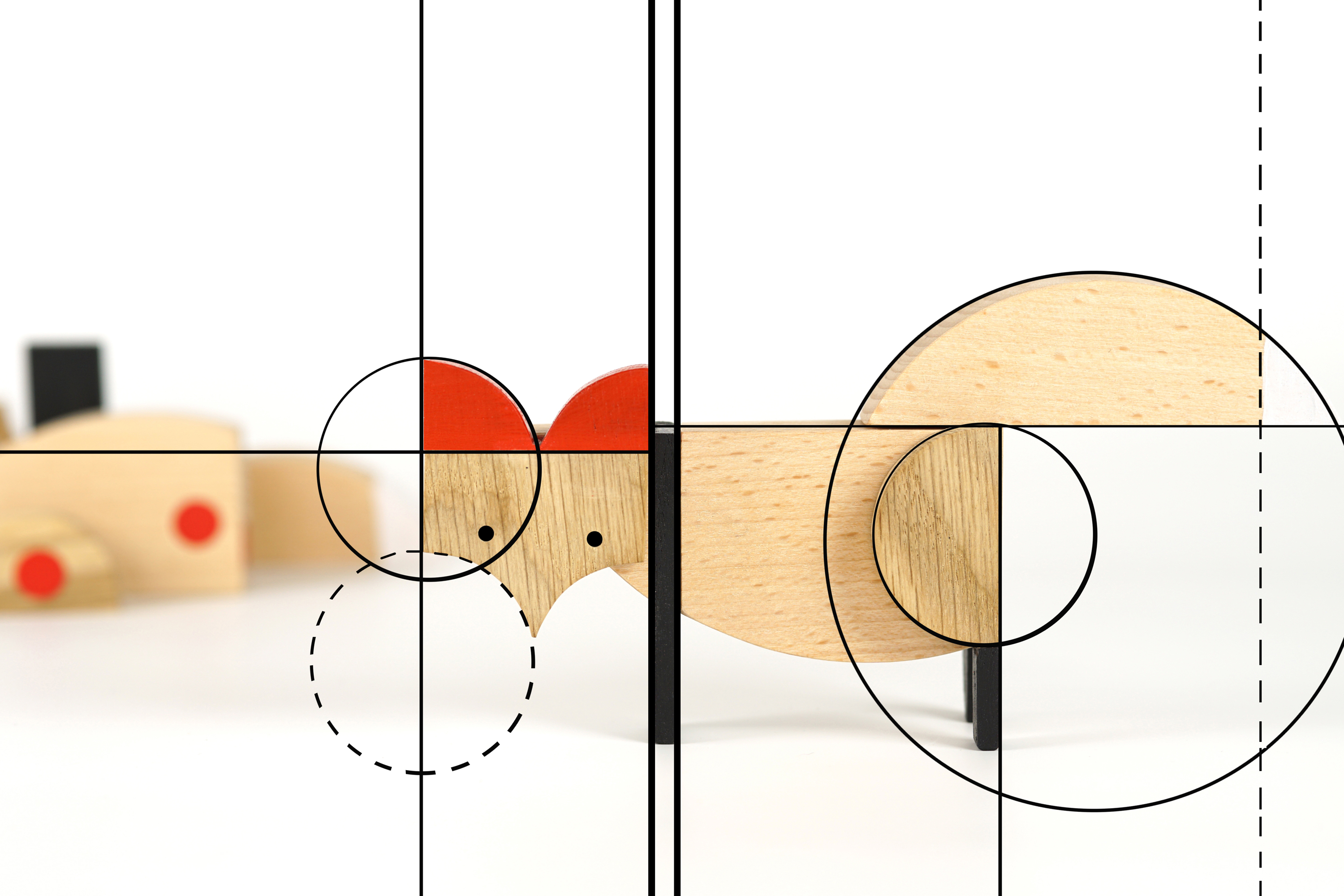
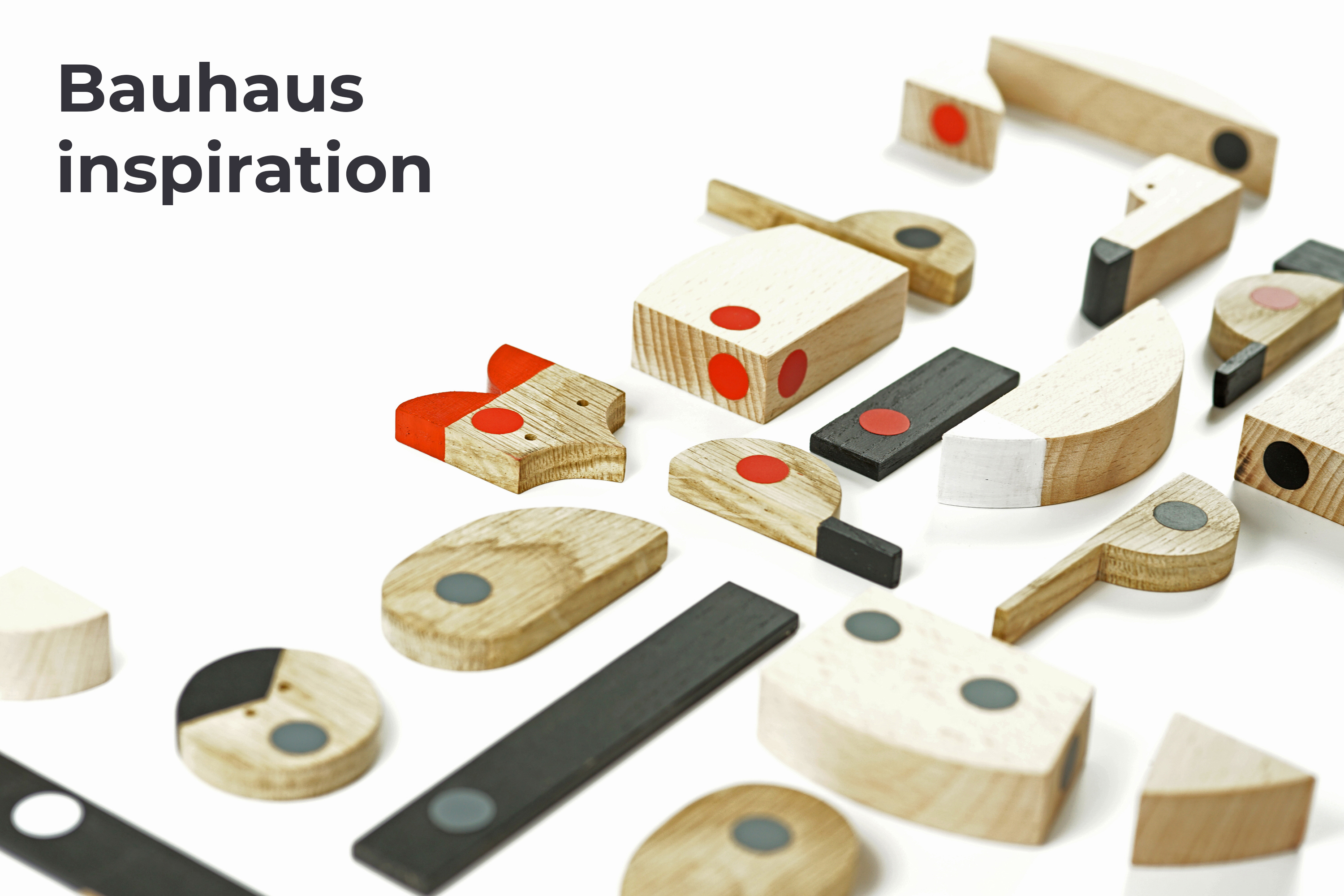
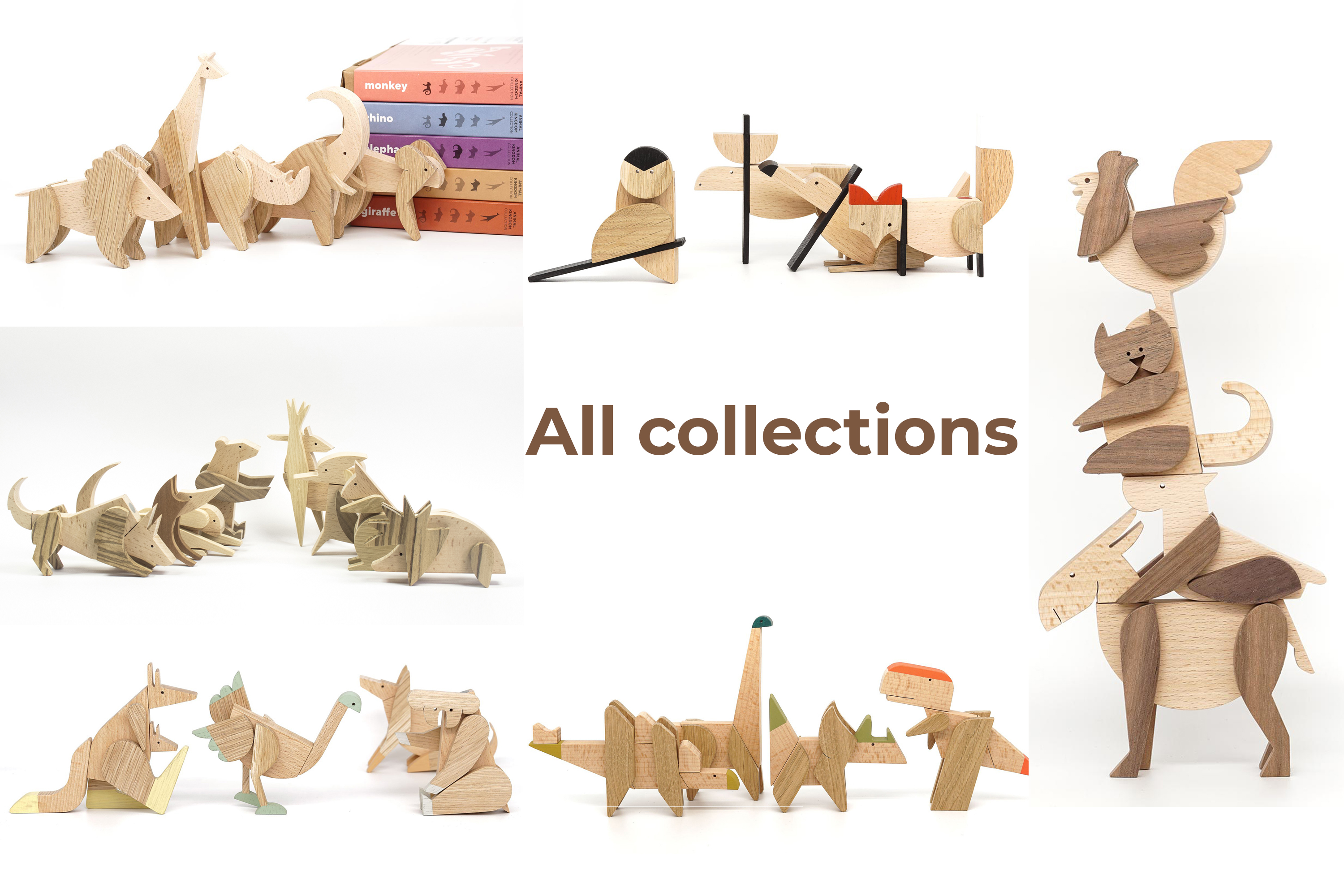
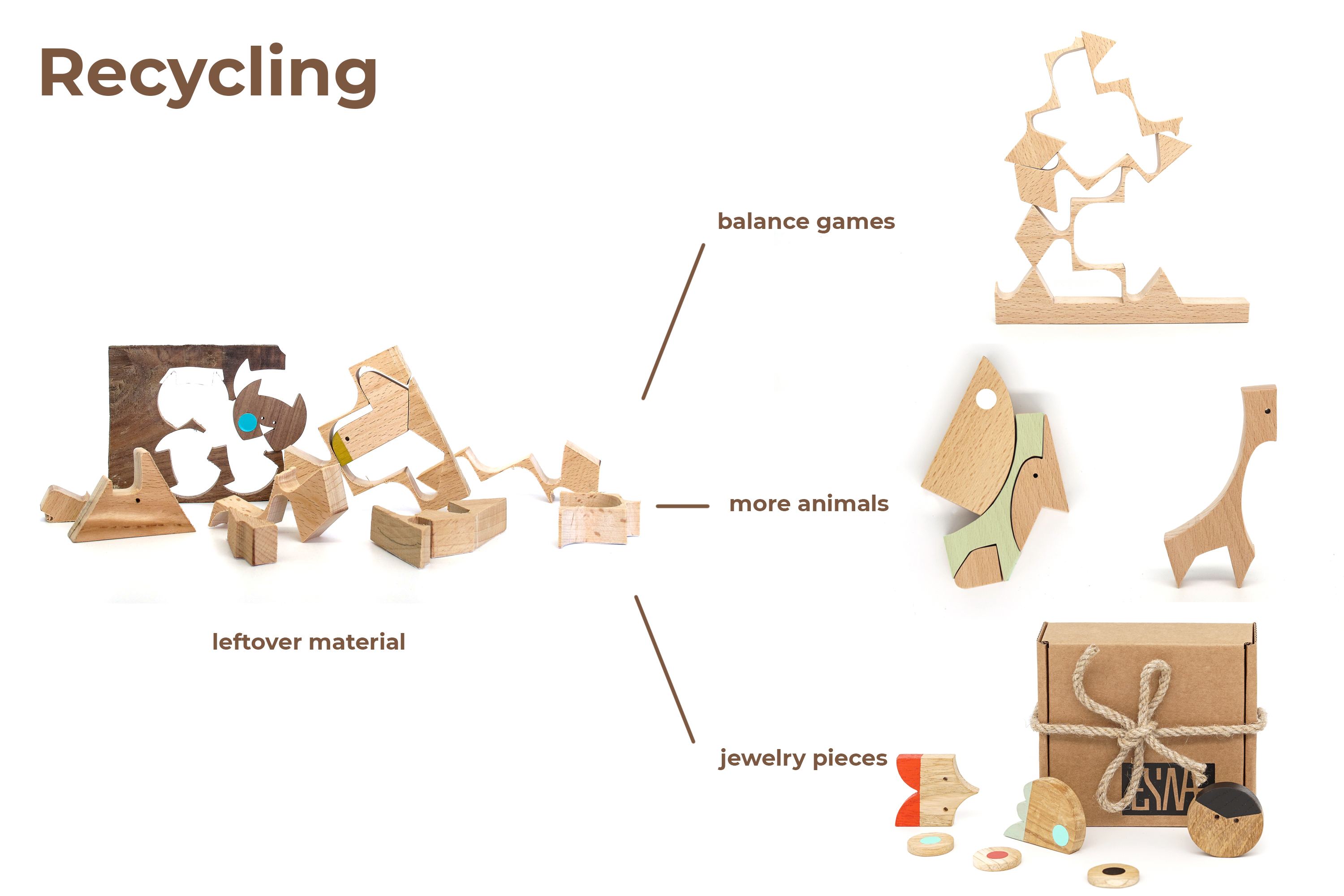

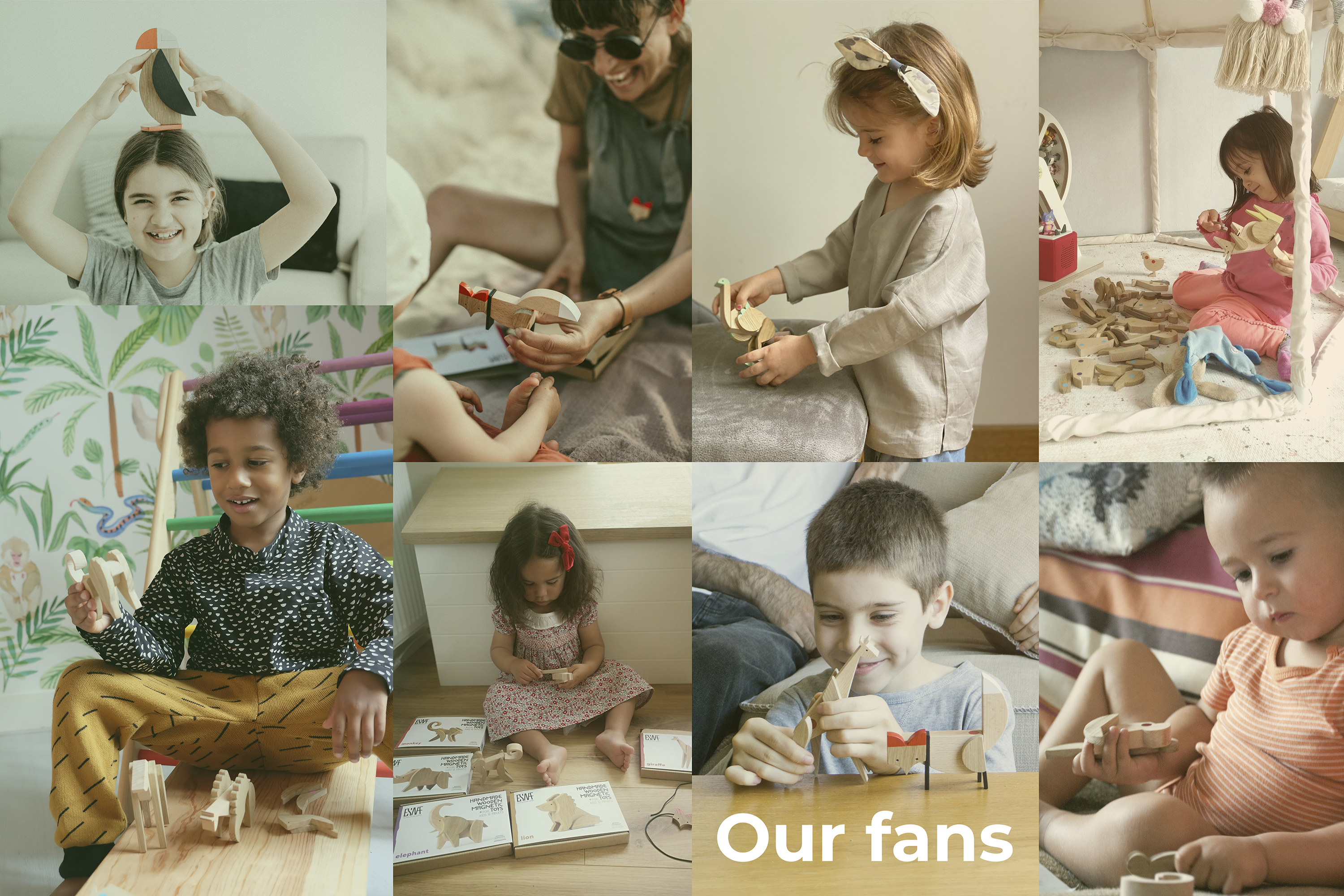
@ESNAF TOYS Ltd, 2020
Content licensed to the European Union.